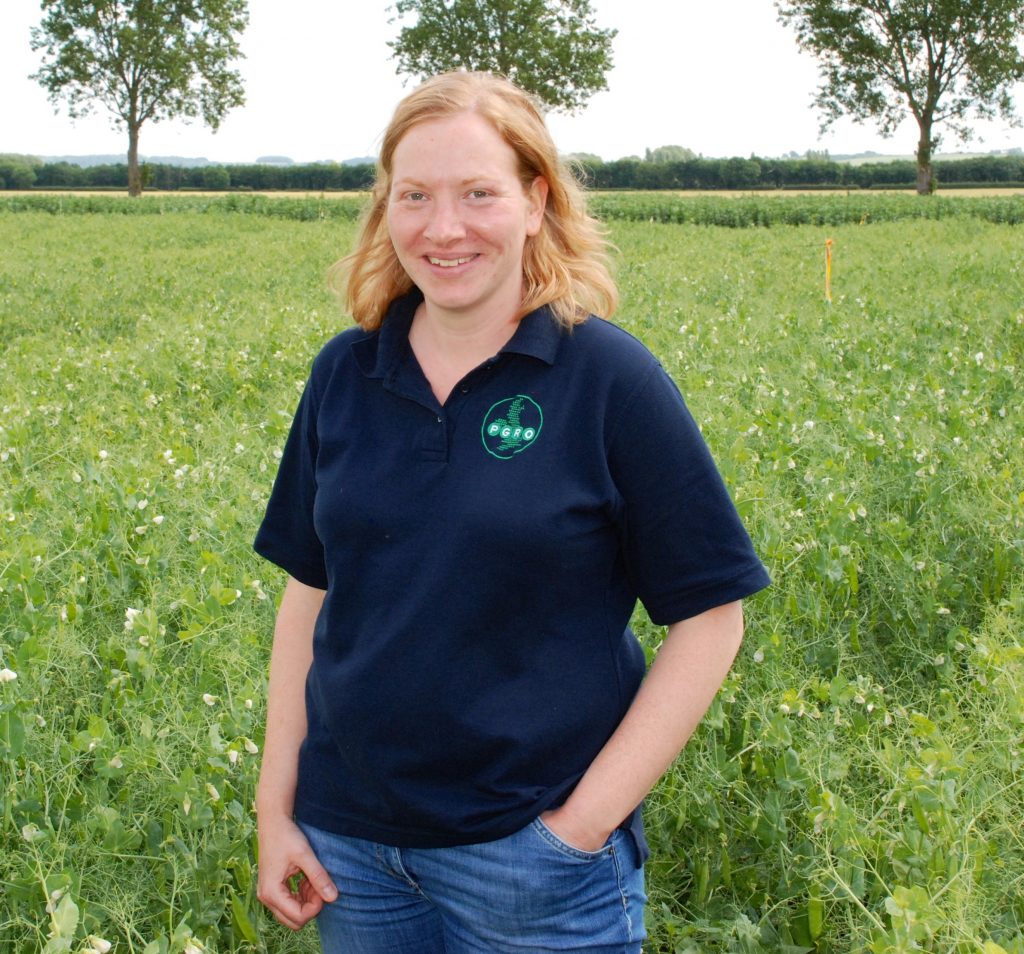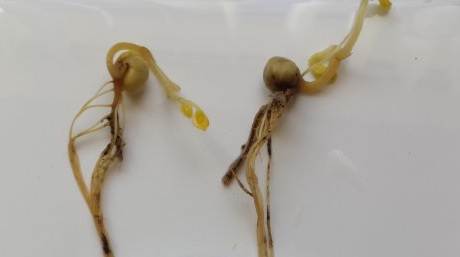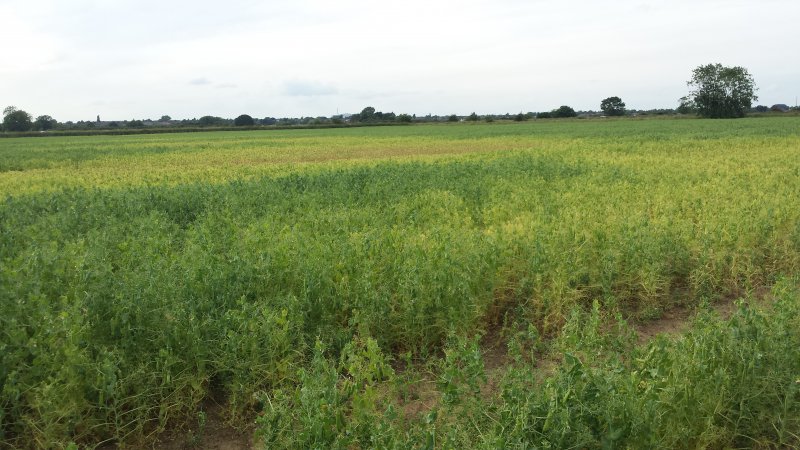Foot rot disease a growing concern for UK soil health
26th July 2016
Dr Lea Wiesel, PGRO Plant Pathologist, warns that foot rot diseases of peas can have major impacts on yields. Infected plants are yellow in colour, may be stunted, and plants
Dr Lea Wiesel, PGRO Plant Pathologist, warns that foot rot diseases of peas can have major impacts on yields. Infected plants are yellow in colour, may be stunted, and plants often die before pods reach their full potential.
“Symptoms are caused by infection of plant roots by soil-borne pathogens. In the UK, the pathogens Fusarium spp. and Didymella pinodella have traditionally caused foot rots in peas,” explains Dr Wiesel. “But now another very destructive pathogen, Aphanomyces euteiches, has been adding to the foot rot complex.
“This is a soil-borne oomycete that produces long-lasting resting spores (oospores) that can survive in soils for more than 10 years, and even low numbers of resting spores can have devastating impacts on yields. Once a field is infected it cannot be used for pea cropping for at least a decade. There is no chemical control available and the only ways to try to control the disease impact is to stop its distribution in the UK and to keep pathogen levels as low as possible in infected fields.
“Aphanomyces euteiches is thought to be a fairly new disease in UK soils and its distribution seems to be restricted to northern parts of the UK so far. It has been confirmed in high levels in fields in the east of Scotland and has been detected in fields in Yorkshire last year.”

Dr Lea Wiesel.
Dr Wiesel comments it is important that we stop Aphanomyces euteiches from getting a hold in UK soils. Some areas in France and the Great Lake regions of the USA are so heavily infested that pea production had to be abandoned in these areas.
Although disease severity is dependent on soil structure and weather conditions, the potentially most important factor is the pathogen level in soils. PGRO has developed a lab-based test to assess risk levels in soil. Infected roots are soft and honey coloured and cannot support plant health.
Infection severity is scored on a scale of 0 to 5 (0 = healthy roots, 5 = dead roots) and any soil with an index of equal or greater 3 is very likely to lead to heavily diseased plants and subsequent reductions in yield.

Foot rot diseases of peas can have major impacts on yields.
In order to get soils tested for levels of Aphanomyces euteiches, growers should send a soil sample of about 2 kg that has been collected in a ‘W’ shape across the field with a note to say that they would like the soil to be tested. The price per soil sample is £149. Results will usually be reported within three weeks. It is, however, best to send in samples around 12-18 months prior to planting pea crops in order to allow sufficient time to re-plan should high levels of the pathogen be detected.
PGRO also offers a test to determine levels of Fusarium solani and Didymella pinodella in soil at a price of £47 per soil sample. Levels are rated on a scale of 0.2 to 5, and for every point increase on the index scale there is a 0.85 t/ha yield penalty.
Dr Wiesel adds that a fourth pathogen, Fusarium oxysporum, has more recently been linked to foot rot diseases in peas: “PGRO is working on a project to develop molecular diagnostics for all four pathogens that cause foot rot. The aim is to be able to determine levels of all pathogens in the soil sample simultaneously at a reduced price for growers. Importantly, we want to link pathogen levels to yield losses per hectare – this will provide a comprehensive risk assessment tool for pea growers and will help to increase efficiency of pea production in the UK.”

